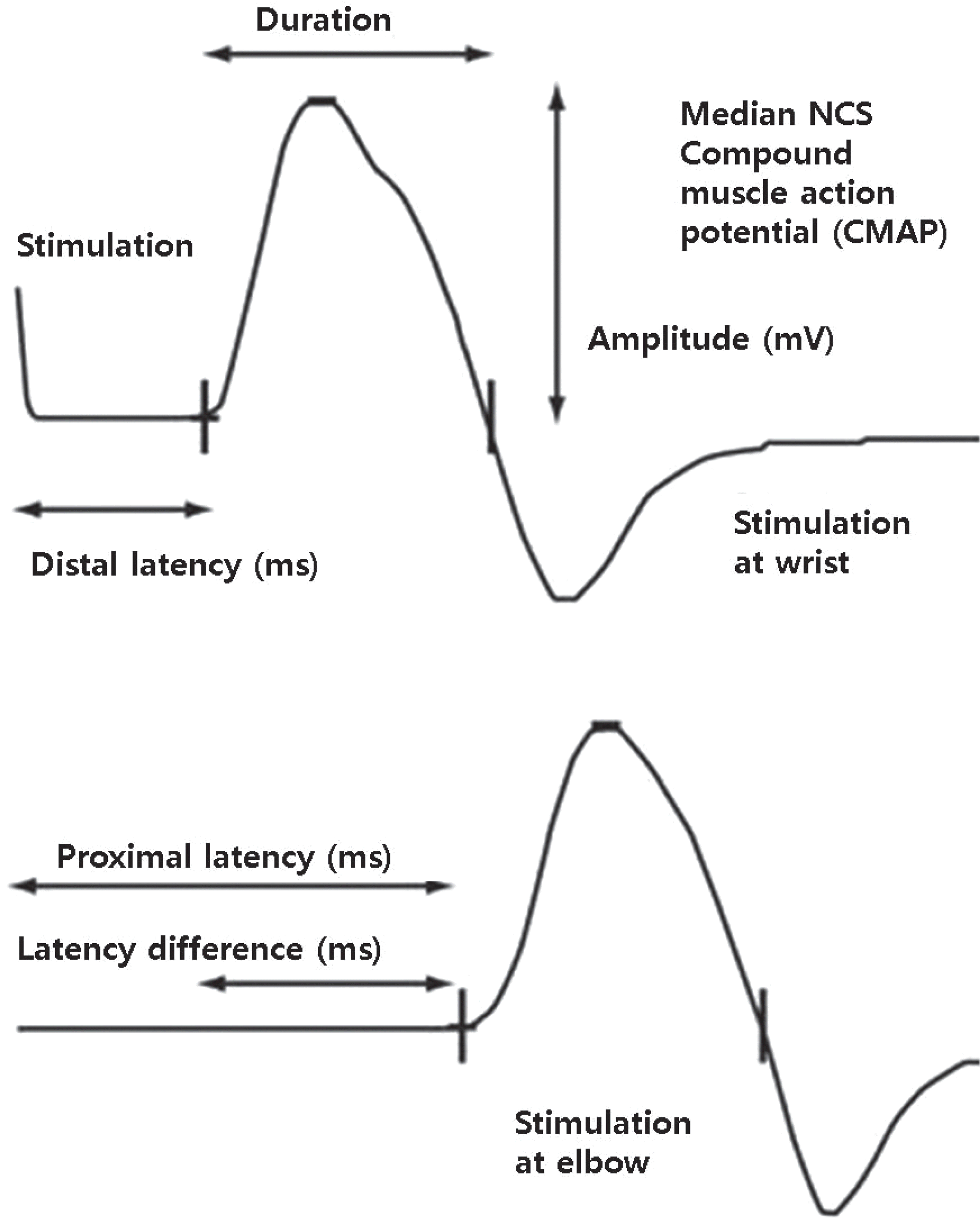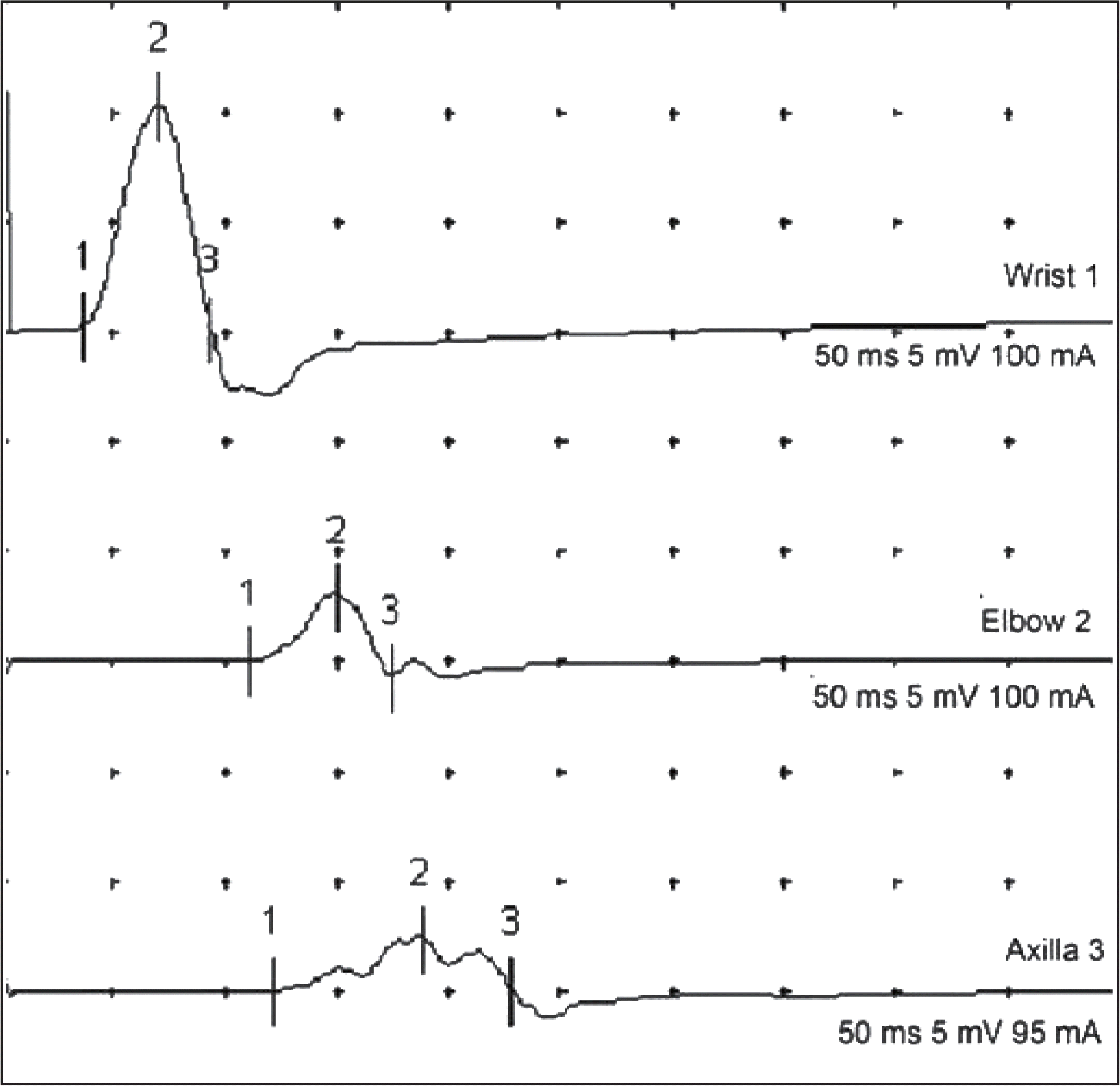Abstract
Nerve conduction study (NCS) is an electrophysiological tool to assess the overall function of cranial and peripheral nervous system, therefore NCS has been diagnostically helpful in the identification and characterization of disorders involving nerve roots, peripheral nerves, muscle and neuromuscular junction, and are frequently accompanied by a needle Electromyography. Furthermore, NCS could provide valuable quantitative and qualitative results into neuromuscular function. Usually, motor, sensory, or mixed nerve studies can be performed with using NCS, stimulating the nerves with the recording electrodes placed over a distal muscle, a cutaneous sensory nerve, or the entire mixed nerve, respectively. And these findings of motor, sensory, and mixed nerve studies often show different and distinct patterns of specific abnormalities indicating the neuromuscular disorders. The purpose of this special article is to review the neurophysiologic usefulness of NCS, to outline the technical factors associated with the performance of NCS, and to demonstrate characteristic NCS changes in the setting of various neuromuscular conditions.
Go to : 
References
1. Dumitru D, Amato A, Zwart M. Electrodiagnostic medicine. 2nd Ed.Philadelphia: Hanley & Belfus;2002. p. 191–208.
2. Barry DT. AAEM minimonograph #36: basic concepts of electric-ity and electronics in clinical electromyography. Muscle Nerve. 1991; 14:937–946.

3. Binnie C, Cooper R, Mauguière F, Fowler C, Prior P. Clinical neurophysiology Vol 1 & 2. Oxford: Butterworth-Heinemann;2004.
4. Delisa JA, Lee HJ, Baran EM, Lai KS. Manual of nerve conduction velocity and clinical neurophysiology. 3rd Ed.Baltimore: Raven Press;1994.
5. Dorfman LJ. The distribution of conduction velocities (DCV) in peripheral nerves: a review. Muscle Nerve. 1984; 7:2–11.

6. Donofrio PD, Albers JW. AAEM minimonograph #34: polyneuropathy: classification by nerve conduction studies and electromyography. Muscle Nerve. 1990; 13:889–903.

7. Kimura J. Facts, fallacies, and fancies of nerve conduction studies: twenty-first annual Edward H. Lambert Lecture. Muscle Nerve. 1997; 20:777–787.

8. Brown WF. The physiological and technical basis of electromyography. Boston: Butterworth-Heinemann;1984. p. 95–168.
9. Mallik A, Weir AI. Nerve conduction studies: essentials and pitfalls in practice. J Neurol Neurosurg Psychiatry. 2005; 76(Suppl 2):ii23–ii31.

10. Oh SJ. Principles of clinical electromyography case studies. 1st Ed.Baltimore: Lippincott Williams & Wilkins;1998. p. 78–120.
Go to : 
 | Fig. 1.Compound muscle action potential (CMAP) in median motor nerve conduction study (NCS). Active recording electrode is over the abductor pollicis brevis (APB) muscle, with stimulation at the wrist, elbow, axilla, and brachial plexus. The more proximal stimulation is per-formed at a measured distance from the first. The difference between the proximal latency (PL) and distal latency (DL) in milliseconds reflects the conduction time along the fastest nerve fibers between the sites, eliminating the travel time from the distal site and across the neuro-muscular junction (NMJ), as well as muscle fiber depolarization time. The distance between the sites in millimeters divided by the nerve con-duction time (PL minus DL) is known as the conduction velocity. |
 | Fig. 2.Conduction block in median motor nerve conduction study (NCS). In the demyelinating cases of conduction block, the compound muscle action potential (CMAP) area or amplitude with stimulation proximal to site of conduction block is smaller compared with distal stimulation (proximal/distal CMAP area ratio < 0.5 and proximal/distal CMAP ampli-tude ratio < 0.7). |




 PDF
PDF ePub
ePub Citation
Citation Print
Print


 XML Download
XML Download